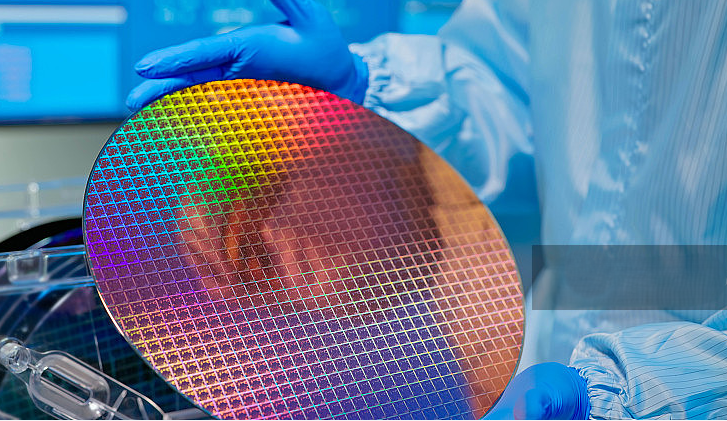


I. Showerhead: A Core Precision Component in Semiconductor Manufacturing
1. Core Functions of Showerhead
Showerheads (gas distribution plates) are critical components in semiconductor equipment, primarily used in cleaning, etching, and deposition processes. Their core functions include:
o Uniform Gas Distribution: Through densely packed microholes (diameter: 0.2–6 mm), process gases (e.g., etching/deposition gases) are evenly sprayed onto wafer surfaces, ensuring uniform gas concentration and directly impacting process precision and yield.
o Corrosion and High-Temperature Resistance: Exposed to fluorine-based corrosive gases and high temperatures, they require materials like high-purity alumina (Al₂O₃), aluminum nitride (AlN), or specialty alloys for chemical stability.
o High Cleanliness: Surface particle contamination must be controlled at ≤0.1 μm to avoid wafer defects.
2. Processing Requirements
o Microhole Precision: Diameter consistency ≤ ±0.01 mm; inner wall roughness ≤ Ra 0.2 μm to prevent turbulent gas flow.
o Surface Flatness: Overall planarity ≤ ±2 μm to ensure sealing with reaction chambers.
o Material Purity: High-purity Al₂O₃, AlN, or alloys with impurity levels < ppm-grade.
3. Manufacturing Technologies
o Microhole Fabrication:
§ Laser Drilling: Suitable for small-batch, high-precision holes (0.1–1 mm)
§ Electron Beam Welding: Uses high-energy electron beams to form microholes in hard materials like AlN.
§ Multi-Axis Machining Centers: Enable high-precision machining of complex curved surfaces via multi-axis toolpath control.
§ Case Study: A company achieved Φ300 mm showerhead fabrication with 1,000 evenly distributed 0.45 mm holes (tolerance < ±0.01 mm) using laser + grinding.
o Surface Flatness Control:
§ Ultra-Precision Grinding: Achieves ±1 μm planarity using diamond abrasive fluids.
§ Hand Scraping: Corrects microscopic errors for ultra-flat surfaces.
o Surface Treatment Technologies:
§ Sandblasting: Enhances coating adhesion by increasing surface roughness.
§ Anodizing: Forms a 10–250 μm Al₂O₃ layer on aluminum surfaces for corrosion resistance.
§ Electroless Nickel Plating: Deposits a uniform nickel layer for corrosion and conductivity enhancement.
§ Electropolishing: Reduces surface roughness via electrochemical removal of micro-protrusions.
II. Surface Treatment Technologies: Key to Showerhead Performance Enhancement
1. Definition and Classification
Surface treatment modifies surface morphology, chemical composition, or phase structure to impart properties like corrosion resistance, wear resistance, or conductivity. Major categories include:
o Surface Modification: Alters surface morphology via physical/chemical methods (e.g., sandblasting, rolling).
o Surface Alloying: Introduces alloying elements into the substrate (e.g., carburizing, nitriding).
o Surface Conversion Coatings: Forms reactive layers via chemical methods (e.g., blackening, phosphating).
o Surface Coating/Plating: Deposits layers via physical/chemical methods (e.g., electroplating, thermal spraying).
2. Applications in Showerhead Manufacturing
o Sandblasting:
§ Role: Removes oxide layers and impurities pre-coating to improve adhesion.
o Anodizing:
§ Role: Forms a dense Al₂O₃ layer on aluminum showerheads for corrosion resistance in harsh environments.
o Electroless Nickel Plating:
§ Role: Creates a uniform nickel layer to protect against corrosive gases.
o Electropolishing:
§ Role: Reduces surface roughness to minimize gas adsorption and particle attachment, extending cleaning intervals.
3. Impact on Showerhead Performance
o Corrosion Resistance: Anodizing/nickel plating form protective layers, extending service life.
o Wear Resistance: Surface treatments harden surfaces to reduce wear under high-temperature/pressure conditions.
o Surface Finish: Electropolishing lowers roughness, reducing particle contamination and improving efficiency.
o Sealing Performance: Ultra-precision grinding ensures planarity for airtight chamber sealing.
III. Industry Cases and Technological Trends
1. Industry Cases
o AMTD
§ Technology: Uses 5-axis machining centers for high-precision microhole fabrication.
§ Applications: Semiconductor and display panel manufacturing.
o Global Enterprise:
§ Technology: Optimized pore structure and gas flow simulation to achieve 95% gas utilization.
§ Outcome: Reduced process costs and improved productivity.
2. Technological Trends
o Hybrid Machining: Combines laser, EDM, and ultrasonic vibration to enhance efficiency in ceramic/alloy processing.
o Smart Manufacturing: Integrates real-time detection and adaptive systems for bulk consistency in microhole arrays.
o Green Surface Treatments: Focus on eco-friendly methods (e.g., chrome-free passivation, water-based coatings) to meet sustainability goals.
Information Sources
· Zhangqiao Scientific Research Platform
· WeChat Official Accounts (Tencent)
· Baidu Scholar
· Local Affordable Services (Zhileao Xue)
· Renrendoc.com
· Zhihu Column
上一篇:The Co-evolution of High-Precision Showerhead Manufacturing and Semiconductor Processes
下一篇:Analysis of the Relationship Between Dry Etching and Showerhead